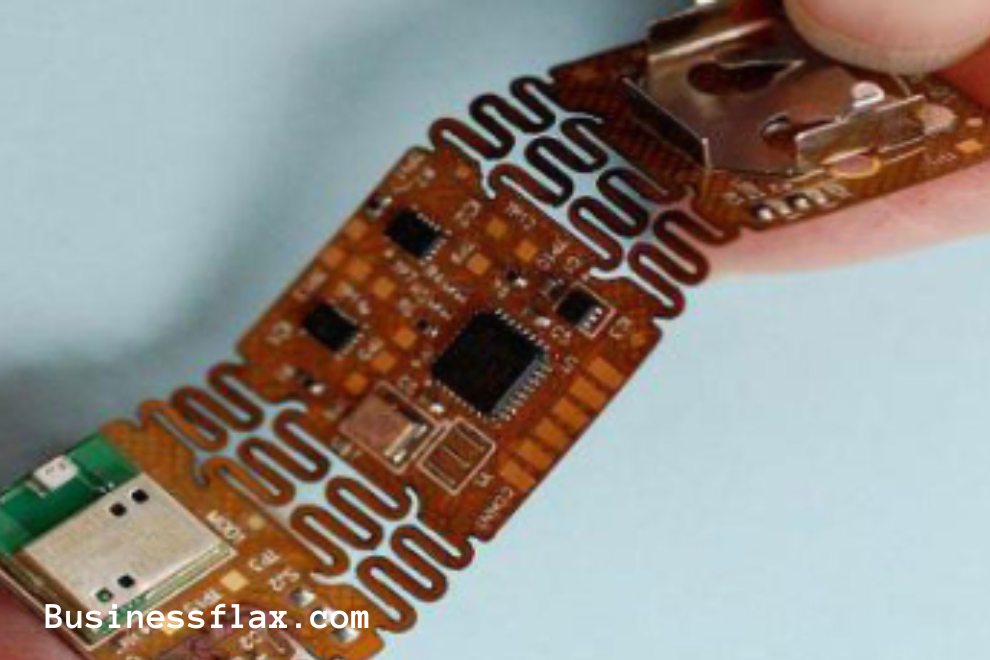Can PCB Be Flexible?

In today’s tech-driven world, flexibility isn’t just a buzzword—it’s a necessity. Flexible printed circuit boards (PCBs) are revolutionizing industries from consumer electronics to medical devices. This article explores how flexible PCBs work and why they’re crucial for the future of innovation.
Exploring the Flexibility of Printed Circuit Boards (PCBs)
Printed circuit boards (PCBs) can indeed be flexible, allowing them to fit into applications where rigid boards would not work.
What Makes PCBs Flexible?
Flexible PCBs, like those available at www.ourpcb.com, are made with a thin insulating polymer film that has conductive circuit patterns affixed to it. This film, often made of polyimide, offers better heat dissipation compared to traditional rigid board materials. Because of this composition, flexible circuits can be placed in locations where heat would otherwise impact performance. Polyimide’s robustness and flexibility render these PCBs highly adaptable to various forms and functions.
Different Types of Flexible PCBs
Several types of flexible PCBs exist:
- Single-Layer Flex Circuit: One conductive copper layer bonded between two insulating polyimide layers. This type is used when simple, single-sided circuit layouts are sufficient.
- Double-Layer Flex Circuit: Two conductive layers with an insulating polyimide layer in between. These are employed when more complex circuits are needed but still require flexibility.
- Multi-Layer Flex Circuit: Multiple conductive layers separated by insulating layers. This type accommodates even more complex designs while remaining flexible.
- Rigid-Flex Circuit: Combines flexible and rigid circuit sections. It’s perfect for compact and intricate devices that need both solid and flexible components.
Inspection techniques like Automated Optical Inspection (AOI) and X-Ray Inspection are used during manufacturing to detect defects and ensure reliability in these flexible PCBs.
Advantages of Using Flexible PCBs
Flexible PCBs, also known as flexible printed circuits (FPCs), offer numerous benefits in modern technology.

Durability and Reliability
Flexible PCBs can endure continuous vibrations and mechanical stress, making them reliable and long-lasting. They have high mechanical resistance, high-temperature tolerance, and good electromagnetic immunity (EMI). These attributes ensure effective performance in demanding environments such as automotive electronics and industrial machinery.
Applications in Various Industries
Flexible PCBs find applications in several sectors. In telecommunications, they support high-frequency and reliable communication devices. They are crucial for automotive electronics that require durable and heat-resistant circuits. Medical devices benefit from these PCBs due to their high precision and adaptability. Lastly, consumer electronics often integrate flexible PCBs for compact and efficient designs.
Flexible PCBs provide unmatched adaptability and performance across multiple applications, significantly advancing technological capabilities.
Challenges in Manufacturing Flexible PCBs
Manufacturing flexible PCBs involves several technical challenges. Material and design considerations and cost implications must be addressed to ensure quality and reliability.
Material and Design Considerations
Choosing the right materials for flexible PCBs is crucial. The flexible portions of the PCB need materials with a low thermal expansion coefficient to prevent reliability issues in varying temperatures. Polyimide is commonly used due to its flexibility and thermal stability.
Bend radius is another key factor. If the bend radius is too small, it can cause mechanical failure or signal integrity issues. Accurate calculation of the bend radius is necessary to maintain the PCB’s functionality. Additionally, designing flexible PCBs requires precision to ensure that the board can handle the estimated mechanical stress during use.
Cost Implications
Manufacturing flexible PCBs can be more expensive than rigid ones. The need for specialized materials like polyimide and complex manufacturing processes increases production costs. The precision required in design and fabrication also contributes to higher expenses.
Additionally, implementing rigorous inspection methods such as Automated Optical Inspection (AOI) and X-Ray Inspection adds to the overall cost. These inspections ensure the integrity of internal connections and solder joints, which are critical for high performance and reliability in applications like automotive electronics and medical devices.
Future Trends in PCB Flexibility
Future advancements in PCB flexibility focus on enhancing material properties and manufacturing techniques to create more reliable and compact designs. These trends are influenced by the increasing demand for smaller, more durable electronic devices in industries like telecommunications, automotive, medical, and consumer electronics.
Innovations in Materials and Techniques
The development of new materials and techniques plays a crucial role in improving flexible PCBs. Researchers are exploring advanced polymers, such as Liquid Crystal Polymer (LCP) and flexible glass, which offer superior mechanical and thermal properties. These materials can endure higher temperatures and more bending cycles, making them suitable for harsh environments.
In manufacturing, techniques like additive printing are gaining popularity. Additive manufacturing allows for precise patterning directly onto flexible substrates, reducing material waste and production costs. This method also enables the creation of complex, multi-layer circuits without the constraints of traditional etching processes.
Integration with Emerging Technologies
Flexible PCBs are increasingly being integrated with emerging technologies, enhancing their functionality and application scope. In wearable technology, flexible PCBs enable the development of lightweight, conformable devices that can seamlessly integrate with human skin. These devices can monitor vital signs or deliver therapeutic treatments.
In the field of Internet of Things (IoT), flexible PCBs facilitate the production of compact, interconnected devices for smart homes and industrial automation. They provide the necessary reliability and durability to withstand continuous operation and various environmental conditions.
Enhanced Design Capabilities
Design tools and software are evolving to support the intricate requirements of flexible PCBs. Advanced Computer-Aided Design (CAD) software now includes features specifically for designing flexible circuits, allowing engineers to simulate bending and stress scenarios. This ensures that the final product will meet performance standards even under mechanical strain.
Additionally, design for manufacturability (DFM) principles are being integrated more deeply into the design process. DFM ensures that flexible PCB designs are optimized for production, minimizing errors and reducing manufacturing costs.
Environmental and Sustainability Considerations
Sustainability is becoming a key consideration in flexible PCB development. Manufacturers are investigating eco-friendly materials and recycling methods to reduce the environmental impact. Flexible PCBs, due to their smaller size and lower material usage, inherently produce less waste. However, ongoing research aims to make the production process even greener by using biodegradable substrates and reducing hazardous chemicals.
Increased Adoption in New Sectors
Recent trends indicate a growing adoption of flexible PCBs in sectors previously dominated by rigid boards. In aerospace, they offer weight reduction and improved reliability in dynamic environments. In healthcare, flexible PCBs are used in advanced diagnostic and treatment devices, benefiting from their ability to conform to different shapes and surfaces.
Flexible PCBs also find applications in renewable energy. Solar panels can benefit from the adaptability and light weight of flexible circuits, improving installation efficiency and durability. These trends highlight the expanding influence of flexible PCB technology across diverse applications.
Conclusion
Flexible PCBs are revolutionizing various industries with their adaptability and performance. From healthcare to aerospace, these advanced circuits are paving the way for innovative applications and enhanced functionality. As materials like Liquid Crystal Polymer and techniques such as additive printing evolve, the potential for flexible PCBs continues to grow. Their integration with emerging technologies like wearable devices and IoT further underscores their significance. With ongoing advancements in design and sustainability, flexible PCBs are set to play a crucial role in the future of technology.






